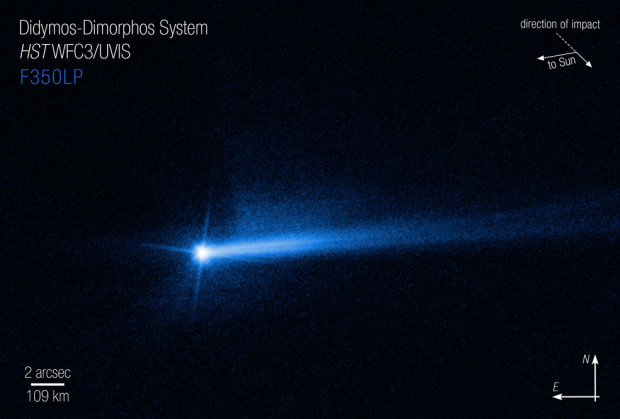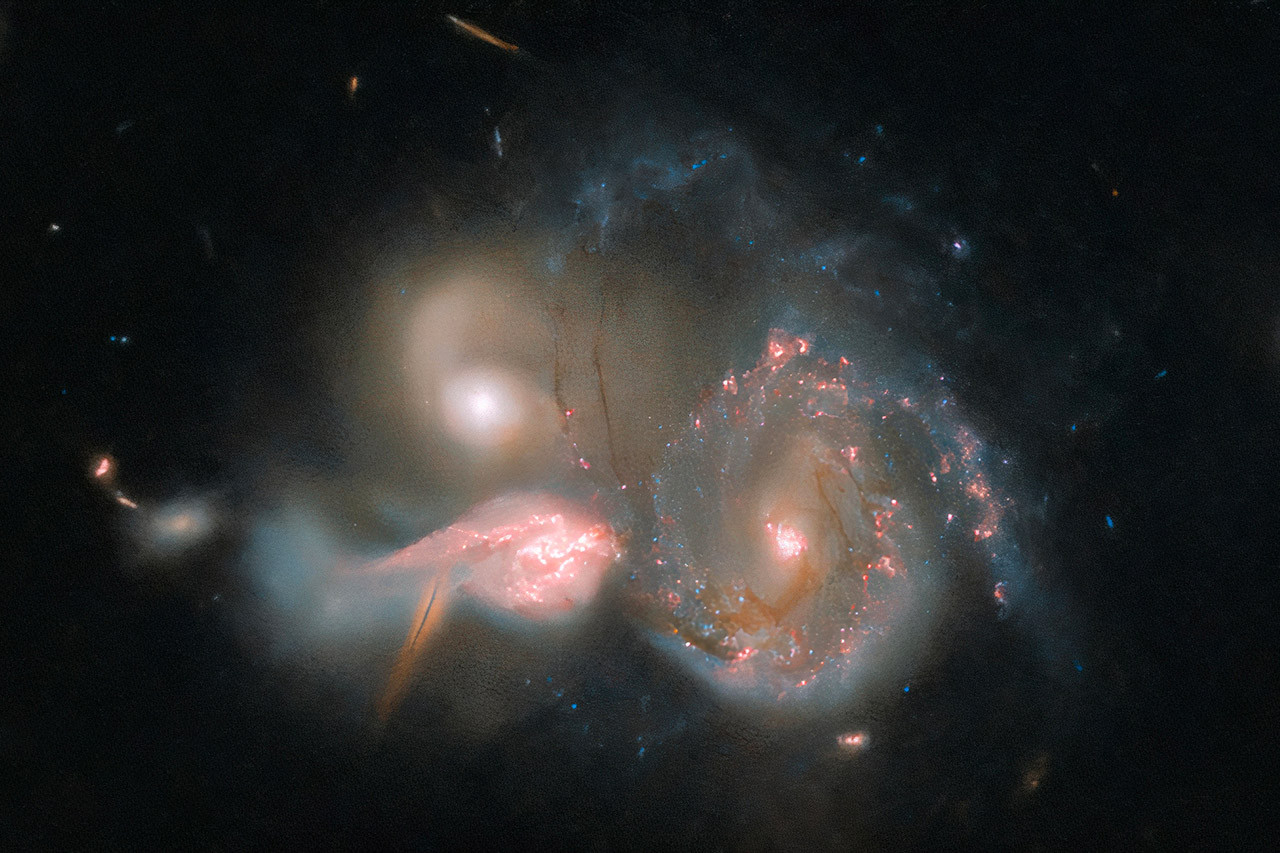A Cosmic Dance of Black Holes
Two telescopes have spotted the closest pair of supermassive black holes to date. The duo, only about 300 light-years apart, were observed in different wavelengths of light using NASA’s Chandra X-ray Observatory and the Hubble Space Telescope.
While black holes are invisible against the dark void of space, these two blaze brightly as the gas and dust they feed on is accelerated and heated to high temperatures. Both celestial objects, which circle around one another, are known as active galactic nuclei.
Active galactic nuclei are supermassive black holes that release bright jets of material and high winds that can shape the very galaxies where they are found.
The black hole duo is the closest pair found through visible and X-ray light. While other black hole pairs have been observed before, they are usually much farther apart. Astronomers discovered these black holes dancing around one another at the center of a pair of colliding galaxies called MCG-03-34-64, which is 800 million light-years away.
Astronomers serendipitously found the black holes when Hubble’s observations revealed three spikes of bright light within the glowing gas of a galaxy. They published their discovery Monday in The Astrophysical Journal.
Close Encounter of the Black Hole Kind
“We were not expecting to see something like this,” said lead study author Anna Trindade Falcão, a postdoctoral researcher at the Center for Astrophysics | Harvard & Smithsonian in Cambridge, Massachusetts, in a statement. “This view is not a common occurrence in the nearby universe, and told us there’s something else going on inside the galaxy.”
The team was intrigued when Hubble picked up on three optical diffraction spikes in a concentrated region of the MCG-03-34-64 galaxy. Diffraction spikes appear when light from a small cosmic region bends around the mirror inside telescopes.
Hubble’s observations were made in optical light, which is visible to the human eye, but the astronomers weren’t sure what they were seeing. Falcão’s team took another look at the galactic region with Chandra in X-ray light.
When the scientists observed the galaxy using Chandra, they were able to pinpoint two powerful sources of X-ray light that matched the optical light sources spotted by Hubble, Falcão said. “We put these pieces together and concluded that we were likely looking at two closely spaced supermassive black holes.”
The team also consulted archival observation radio wave data collected by the Karl G. Jansky Very Large Array of radio telescopes near Socorro, New Mexico. The black hole duo was also found to release energetic radio waves.
“When you see bright light in optical, X-rays, and radio wavelengths, a lot of things can be ruled out, leaving the conclusion these can only be explained as close black holes. When you put all the pieces together it gives you the picture of the (active galactic nuclei) duo,” Falcão said.
Meanwhile, the third diffraction spike observed by Hubble has an unknown origin, and the team requires more data to understand what it could be. The source of light might be from gas that was shocked by an energetic release of material from one of the black holes.
“We wouldn’t be able to see all of these intricacies without Hubble’s amazing resolution,” Falcão said.
A Cosmic Collision in the Making
Astronomers have observed pairs of black holes that are closer together than these two through radio telescopes, but those duos haven’t been observed in other wavelengths of light.
Both supermassive black holes once served as the centers of their respective galaxies, but a galactic merger brought the two objects much closer together. Eventually, their close spiral will result in a merger in about 100 million years, according to NASA, causing an energetic release of gravitational waves, or ripples in the fabric of space and time.
Such gravitational waves created by the collisions of supermassive black holes could be detected in the future by LISA, the European Space Agency-led Laser Interferometer Space Antenna mission that’s expected to launch in the mid-2030s.
This incredible discovery offers a unique glimpse into the cosmic dance of merging black holes and the powerful forces that shape the universe. It also provides valuable insight into the intricate processes that drive galaxy mergers and the evolution of black holes over time. As astronomers continue to observe this duo, they will gain a deeper understanding of the fundamental laws of the cosmos and the mysteries hidden within the depths of space.


















